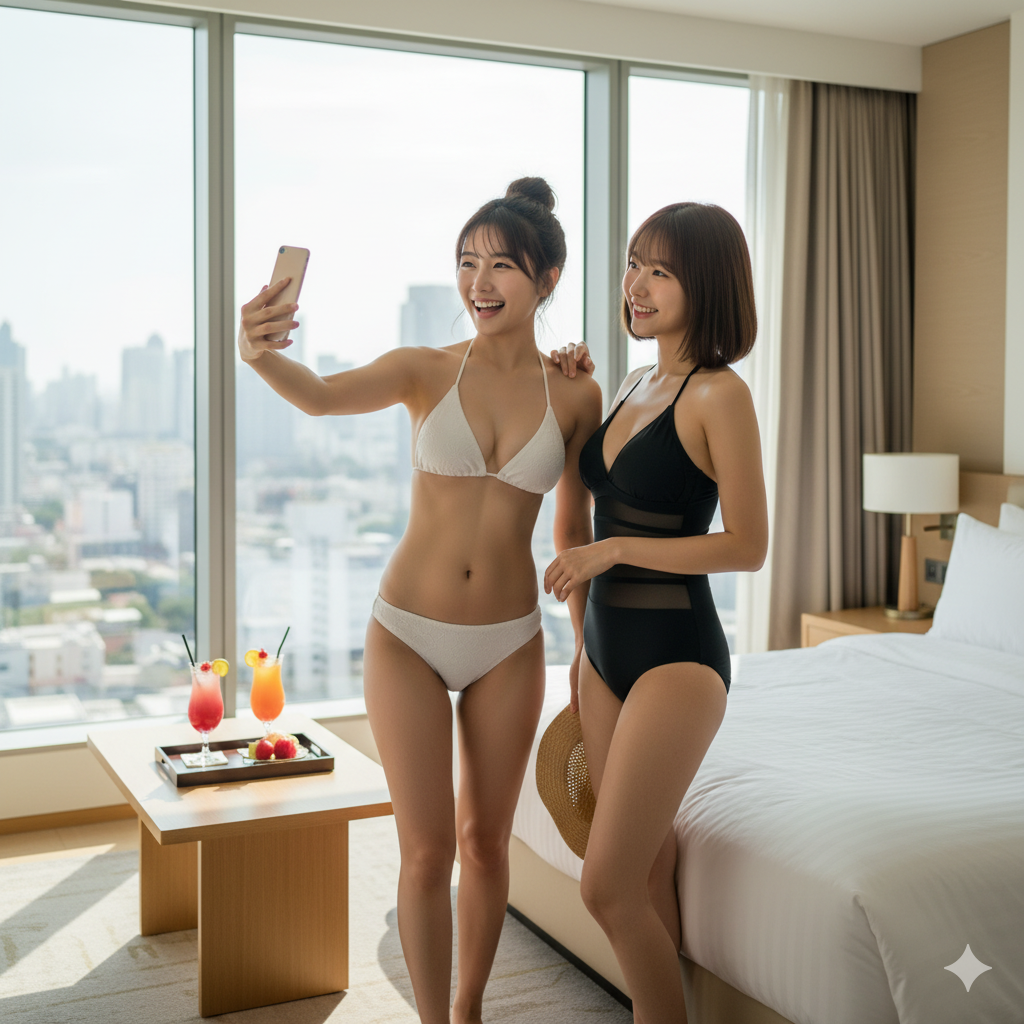Japan’s soapland venues are urban, room-based spaces designed for controlled intimacy: reception first, then a private suite with bath, subdued lighting, and a fixed session clock. The service is choreographed—wash, bath, close-contact bodywork, sometimes oral contact (as a standardized, non-pornographic, institutionalized form of touch). Contemporary users range from 20s to 50s, local residents to visitors. Multilingual support is expanding, but operational safety hinges on clarity of communication, hence the emphasis on phone screening, ID checks, and language notes on official pages. As ethnographic urban culture, soaplands formalize “staged intimacy” inside dense nightlife districts, balancing discretion, time discipline, and price segmentation across neighborhoods.
Contents
1. What does “gaijin” mean here, and where should you start?
2. Which areas are best, and how do you access them?
3. What are typical prices, times & eligibility requirements?
4. What venue types exist and what do they actually do?
5. How to reserve, behave, and what phrases help?
1. What does “gaijin” mean here, and where should you start?

1-1 Term & practice
gaijin soapland is a search phrase, not a legal category. Shops rarely write “gaijin OK/NG” on official pages; instead, they publish practical constraints (language, booking method, hours). For instance, a Naha shop states: “Phone calls and customer service will be provided in Japanese only; in-store customer service will be provided via smartphone,” which signals acceptance with translation support when needed (ANNEX JAPAN (Price/System) – official). Conclusion: read each shop’s system/price page for language notes, then book accordingly.
1-2 What counts as “primary info” to trust
Use official association portals and the shop’s own pages. For example, regional associations maintain clean access and district basics: Kobe SB Association (official), Ogoto Soap Association (official), and Kanazuen (Gifu) official. These aren’t third-party blogs; they’re the district’s own information.
1-3 A realistic starting plan
Pick a district with structure (Tokyo Yoshiwara, Kobe Fukuhara, Gifu Kanazuen, Sapporo Susukino, Okinawa Naha). Choose shops that publish hours/fees and a reservation channel you can use. Examples below show hours, fees, or language and booking windows from official pages: LUXE (Yoshiwara) – concept, hours, reservation, Yuzuki (Yoshiwara) – hours/fee/access, Platinum Stage (Yoshiwara) – hours, TOUCH VIP (Susukino) – booking window, Blue Château (Kumamoto) – fee/hours/same-day policy, ANNEX JAPAN (Naha) – language note & hours.
2. Which areas are best, and how do you access them?

2-1 District snapshots (official references)
Kobe’s Fukuhara district is coordinated by the Kobe SB Association (official), which also publishes station-to-area walk directions (e.g., JR Kobe Sta → area entrances in ~5 min). Ogoto (Shiga) maintains an official association site (Ogoto.net), and Kanazuen (Gifu) describes its scale clearly: ~64 shops and structured fee ladders (Kanazuen official).
2-2 Example shop hours (to plan your arrival)
Tokyo Yoshiwara venues commonly run daytime to midnight. Examples: Yuzuki 10:00–24:00; Platinum Stage 09:00–24:00; LUXE 11:00–24:00. Outside Tokyo: TOUCH VIP (Sapporo) 08:30–LAST; Blue Château (Kumamoto) 12:00–00:00; ANNEX JAPAN (Naha) 12:00–24:00.
2-3 Access & station pointers
Fukuhara offers simple station approaches: JR Kobe Station or Kosoku-Kobe/ Shinkaichi, then ~5 min to the area according to association guidance (Kobe SB Association). In Yoshiwara, some high-end shops arrange pick-ups from Minowa, Minami-Senju, Tawaramachi, or Asakusa—e.g., Yuzuki official access note.
Table 2: Access & Hours
| Station | Walk Time | Hours (Example Shop) | Area (JP Link) |
|---|---|---|---|
| JR Kobe / Kosoku-Kobe / Shinkaichi | ~5 min to Fukuhara entrances | Varies by shop | Kobe SB Association (official) |
| Tokyo Metro Minowa / Minami-Senju / Tawaramachi / Asakusa | Pick-up available by call | 10:00–24:00 (Yuzuki) | Yuzuki (official) |
| Susukino (Sapporo) | Central district | 08:30–LAST (TOUCH VIP) | TOUCH VIP (official) |
Conclusion → Numbers → Source: Kobe walks ~5 min (Kobe SB Association); Yuzuki hours 10:00–24:00 and pick-up stations (official); Susukino example hours 08:30–LAST (official).
3. What are typical prices, times & eligibility requirements?

3-1 Concrete examples (official pages)
¥27,500 / 110 min at Tokyo Yoshiwara’s Yuzuki (official); ¥50,000 / 90 min at Kumamoto’s Blue Château (official), which also states reservations are same-day only (“御予約は当日のみ”). Area-level ladders appear in Gifu Kanazuen: fee bands of ¥5,000–¥30,000+ depending on shop class (Kanazuen official).
3-2 Eligibility & language
Language is a practical filter: Okinawa’s ANNEX JAPAN (official) notes calls are in Japanese only, with smartphone translation during service. Susukino’s TOUCH VIP (official) shows booking windows that privilege members (see below), a common way to manage demand regardless of nationality.
3-3 Reservation timing windows
Sapporo’s TOUCH VIP (official) accepts same-day reservations from 07:30 and allows members to book from 12:00 the previous day. Kumamoto’s Blue Château accepts same-day only. Tokyo venues often run ~09:00–24:00 with phone/LINE; see LUXE (official) for an English concept page that lists contact hours 11:00–24:00.
Table 3: Reservation & Eligibility
| Method | Lead Time | Eligibility / Note | Official (JP Link) |
|---|---|---|---|
| Phone (Sapporo TOUCH VIP) | Same day 07:30 start; members prev-day 12:00 | Member early booking privilege | TOUCH VIP (official) |
| Phone (Blue Château, Kumamoto) | Same-day only | 90 min ¥50,000; hours 12:00–00:00 | Blue Château (official) |
| Phone / LINE (LUXE, Yoshiwara) | Within business hours (11:00–24:00) | English concept page; contact visible | LUXE (official) |
| Phone (ANNEX, Naha) | During 12:00–24:00 | Japanese-only phone; in-store smartphone translation | ANNEX JAPAN (official) |
Conclusion → Numbers → Source: windows 07:30/12:00 (members) at TOUCH VIP (official); Blue Château is same-day only with ¥50,000/90 min (official); LUXE contact hours 11:00–24:00 (official); ANNEX notes Japanese-only phone (official).
4. What venue types exist and what do they actually do?

4-1 High-end vs. standard
High-end shops emphasize training and hospitality; LUXE highlights professional oil-massage instruction and etiquette training on its official concept page (LUXE official). Standard shops focus on turnover and clear price/time bundles (see examples below).
4-2 Typical session flow as “staged intimacy”
Reception confirms ID/booking and explains rules; private suites include bath and a low-slip mat for close-contact bathing. Physical scripts are standardized—wash, bathing liaison, caress, potential oral contact—more akin to “ritualized, consensual bodywork” than improvisation. This ritualization reduces misunderstanding across language and sets a clear time boundary.
4-3 Base fees by area/venue (official examples)
Table 1: Venue Types & Base Fees
| Venue / Area | Typical Fee | Session Time | Area (JP Link) |
|---|---|---|---|
| Yuzuki (Yoshiwara) | ¥27,500 | 110 min | Official website (Japanese) |
| Blue Château (Kumamoto) | ¥50,000 | 90 min | Official website (Japanese) |
| Kanazuen district (Gifu) | Bands: ¥5,000 / ¥10,000 / ¥20,000 / ¥30,000+ | Varies by shop | Official website (Japanese) |
Conclusion → Numbers → Source: Yuzuki ¥27,500/110 min (official); Blue Château ¥50,000/90 min (official); Kanazuen fee bands published on the district’s official site (official).
5. How to reserve, behave, and what phrases help?

5-1 Booking steps (plain English)
- Check the shop’s System/Price and Access/Hours pages. Example sources: TOUCH VIP (Susukino); Blue Château; LUXE; Yuzuki.
- Prepare ID and a local phone/WhatsApp/LINE. Respect language notes—e.g., ANNEX JAPAN says Japanese-only calls (on-site translation via smartphone).
- Call or message during the window (e.g., TOUCH VIP starts at 07:30 same day; members get 12:00 previous-day booking).
5-2 Etiquette: institutionalized politeness
- Arrive on time; the clock is strict (e.g., 90–110 min bundles above).
- Follow staff explanations; these are standardized to prevent confusion across language and culture.
- Cash readiness: some official pages caution foreign cards may fail; bring backup cash (ANNEX JAPAN).
5-3 Useful phrases (keep it simple)
Table 4: Tips & Phrases (quick reference)
| Situation | Japanese (romaji) | Meaning (EN) |
|---|---|---|
| Ask availability | 今日(きょう)、◯時に予約できますか? (Kyō, ◯-ji ni yoyaku dekimasu ka?) | Can I book today at ◯:00? |
| Confirm course | ◯分コースをお願いします。 (◯-pun kōsu o onegai shimasu.) | I’d like the ◯-minute course. |
| Language note | 日本語が少しだけ話せます。ゆっくりお願いします。 (Nihongo ga sukoshi dake hanasemasu. Yukkuri onegai shimasu.) | I speak a little Japanese; please speak slowly. |
Phrases are practical templates; always align with each shop’s posted rules and hours linked above.
6. Summary and Next Steps

6-1 Internal picks on SoapEmpire (related guides)
- Tokyo Red-Light District Guide (English)
- Osaka Soapland Guide
- How to Book: Scripts, Timing, & Payment
Official portals and contact: SoapEmpire (official) ・ Contact / Inquiry
6-2 Final pointers (by the numbers)
Plan around hard numbers: 07:30 same-day phones and 12:00 member pre-booking (Susukino); ¥50,000/90 in Kumamoto; 10:00–24:00 and pick-ups in Yoshiwara; ~5 min walking from Kobe stations. Then map your route and make the call.
SoapEmpire Recommendation (Editor’s Note)
If you’re searching for gaijin soapland information, chances are you want two things: clarity and confidence. Clarity, because policies differ by venue and are rarely written as “foreigner OK/NG”; confidence, because you don’t want to guess about hours, prices, or rules after you’ve already reached the district. The solution is a structured, evidence-first plan that lines up your language ability, identification, and timing with what official pages actually say.
SoapEmpire exists to make that alignment simple. We read Japanese system/price pages and association sites, extract the numbers that matter (like 07:30 same-day starts, 11:00–24:00 contact windows, or ¥27,500 / ¥50,000 examples), and summarize them in plain English. Instead of guessing whether a shop will handle English calls, we highlight explicit notes such as “Japanese-only phone; use smartphone translation on site.” Instead of vague “foreigner policy,” we show how eligibility is implemented in practice: language, booking windows, and payment cautions on the official page.
Because we cover major districts nationwide, we can also route you to the right place for your time budget—say, day sessions in Yoshiwara, morning-first windows in Susukino, or structured fee ladders in Kanazuen. And if you’d like help bridging the last mile—making the call or sending the template message—we provide 24-hour booking support for only $10. That means you share the shop name, time, and your nickname; we handle the communication and confirm the details, so you arrive with certainty rather than hope.
In short, if you came here searching gaijin soapland, we want you to leave with a plan that genuinely fits: a shop that suits your language level, a session length and price you understand, and a reservation made inside the right window. For reservations or inquiries, please contact us via the inquiry form. SoapEmpire will translate the “institutional rules” into practical steps—so your night is smooth, respectful, and exactly as you expect.
FAQ
1) Can foreigners book directly by phone?
Yes, if the shop accepts calls in Japanese or your Japanese is sufficient. Some official pages specify Japanese-only phone (e.g., ANNEX JAPAN), in which case you should use simple scripts or arrange help via LINE/translation. Always check the shop’s system page first.
2) What ID should I bring?
Bring a government photo ID (passport for visitors). Some shops do quick age verification or match the reservation name to the caller. Keep the ID ready at reception if asked.
3) What are normal hours and session lengths?
Common hours are roughly 09:00–24:00 in Tokyo, earlier starts in Sapporo (e.g., 08:30–LAST), and midday to midnight in regional cities. Typical sessions are 60–110 min based on the shop’s menu.
4) How far are the districts from stations?
It varies. Example: Kobe’s association says area entrances are about 5 minutes from JR Kobe / Kosoku-Kobe / Shinkaichi exits. Some Yoshiwara shops offer station pick-ups from Minowa, Minami-Senju, Tawaramachi, and Asakusa.
5) Can I use credit cards?
Often yes, but some official pages warn foreign cards may fail; carry cash as backup (e.g., ANNEX JAPAN notes this explicitly on their system page).
If you’re interested in visiting any of these places, SoapEmpire offers a 24-hour booking support service for only $10.
Just send the store name, preferred time, and your name (nickname is fine) to:
artistatakuma@icloud.com.
We’ll take care of your reservation quickly and smoothly.
※参考情報(editor’s note): If a shop’s page does not explicitly state language or ID policy, assume standard age verification and basic Japanese/translation sufficiency are required. Always reconfirm by phone/LINE within posted hours.
Official site: https://soapempire.com/ ・ Contact: https://soapempire.com/contact/